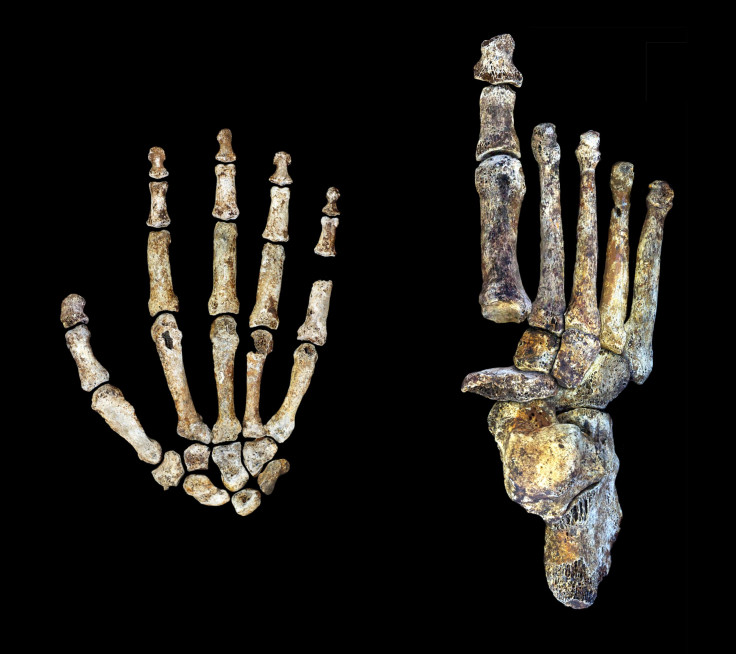Analysis Of Homo Naledi's Hand And Foot Reveal It Climbed Trees And Used Tools

Most scientists today can agree that before Homo sapiens, there was about 15 to 20 different versions of humans spanning about six million years of evolution. And recently, a close cousin of the modern day human, named Homo naledi, was unearthed in South Africa.
Homo naledi was named after the cave it was discovered in, and despite its similarities to humans — like its facial features and elongated limbs — it still had its own unique features. In two papers recently published in Nature Communications, analysis of Homo naledi’s foot and hand show just how different it was from humans today. The research was done by an international team of scientists from the Evolutionary Studies Institute at the University of the Witwatersrand in South Africa — the same university that discovered Homo naledi in 2013. The researchers discovered both hand and foot inside the Dinaledi Chamber of the Cradle of Humankind World Heritage Site, where some 1,500 fossil elements have been found over the past two years.
Both papers describe the nature of Homo naledi ’s hand and foot, which suggest it was well equipped for tree climbing and upright walking. Moreover, the two limbs were also capable of performing precise movements, akin to how we use our hands and feet today. When taken together, the hands and feet of Homo naledi show a separation of hand and foot function while also providing new insight into the skeletal form that evolved in early members of our species.
The Foot
The researchers were able to put together 107 separate elements of Homo naledi ’s foot, including a nearly complete, adult right foot. The foot closely resembles that of modern humans and shows that Homo naledi was well suited for upright walking. However, the foot differs from modern humans in that it has more curved toes, which suggested that Homo naledi climbed trees as a form of movement.
The researchers concluded that, aside from that of Homo sapiens and the Neanderthals, Homo naledi possessed some of the most capable hands and feet found in fossils on record. “Although there are members of the genus Homo known with primitive feet and relatively small brains, and with derived feet and larger brains than Homo naledi, Homo naledi is the first known hominin with this combination of such derived feet and legs with a small brain size.”
The Hand
A nearly complete adult right hand was found in the cave as well. Based on the nearly 150 hand bones found within the cave, researchers found that Homo naledi was unlike any other hominin species discovered before. The structure of the wrist and thumb bones are similar to modern humans and Neanderthals, and suggest that Homo naledi used stone tools and had a powerful grip. However, Homo naledi differed from later humans because its fingers were more curved, again suggesting that Homo naledi used its hands for tree climbing.
In a press release, lead author Tracy Kivell said, "The tool-using features of the H. naledi hand in combination with its small brain size has interesting implications for what cognitive requirements might be needed to make and use tools, and, depending on the age of these fossils, who might have made the stone tools that we find in South Africa."



























